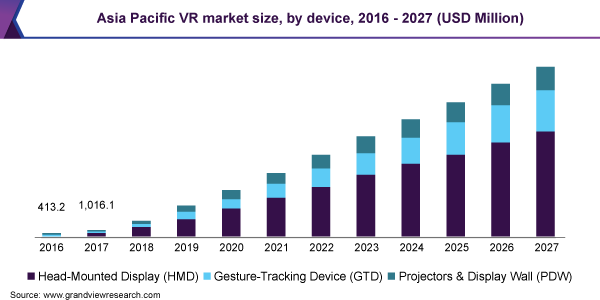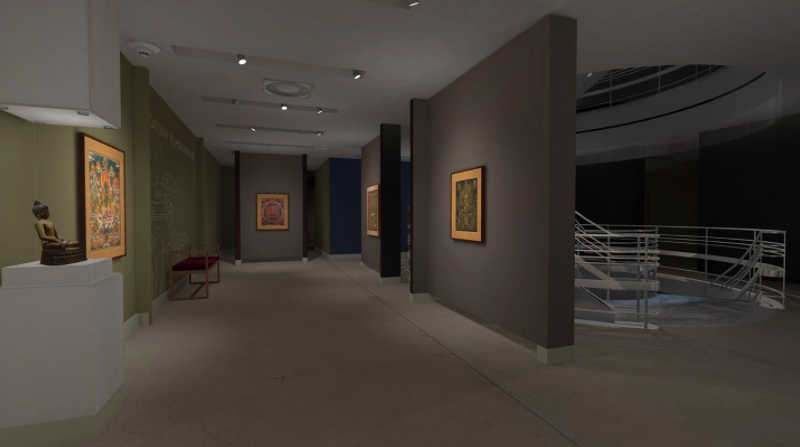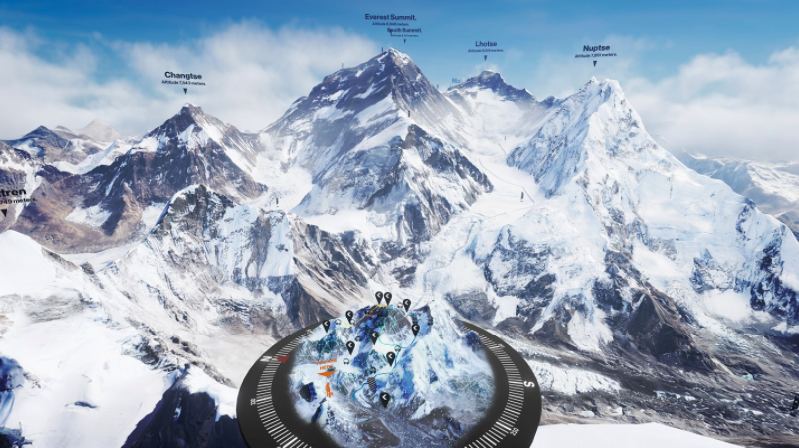How Virtual Reality (VR) Transforms the Travel Industry
The transition to the web started approximately 20 years ago. It happened already in many fields: education, entertainment, collaboration, e-commerce, marketing, communication, real estate. The same happens in the travel industry. More and more clients of travel agencies are choosing to organize their holidays on their own using online tools.
Virtual Reality is changing travel industry in an unstoppable way! VR can create amazing experiences limited only by your imagination. It is an excellent tool for marketing hotel rooms, flights, and travel products. As a hotel or travel company, you can provide unique customer experiences with VR elements on your website or as app downloads. Let’s review today how Virtual Reality tourism improves the travel industry and what to expect in the future. If you have any questions, please get in touch with our dedicated development team.
Virtual Reality in travel industry VS Reality
Just a few years ago, virtual reality was being showered with very real money. The industry raised an estimated $900 million in venture capital in 2016, but by 2018 that figure had plummeted to $280 million. Oculus—the Facebook-owned company behind one of the most popular VR headsets on the market—planned to deliver 1 billion headsets to consumers, but as of last year had sold barely 300,000.
Recent articles in Fortune and the Verge have voiced disdain for VR technology. Common complaints include expensive, clunky, or uncomfortable hardware and unimaginative or repetitive content. Skeptics have compared VR experiences to the 3D television fad of the early 2010s. We can understand the skepticism. That’s why it is important to understand that VR is here not to replace the real world but to expand your opportunities.


As for the travel industry, people need to travel physically and this will never disappear, that is how Virtual Reality can bring travelers back to agencies for better VR experience.
Advantages of VR For Travel and Tourism
The primary benefit of Virtual Reality in the tourism and travel industry is to initially provide a kind of ‘try before you buy’ option. The immersive nature of VR enables everyone to experience a virtual version of a hotel room, attraction, or unique selling point. VR can cause strong emotions more convincingly than just viewing images or reading customer reviews can achieve. Because customers usually require lots of information before they book a hotel room, you can significantly shorten the process of researching and seeking information by using VR.
VR experiences offer an effective way to show customers how their stay could look like, and give them confidence that they are dealing with an honest vendor with nothing to hide, before arriving at a purchase decision. Here is the full list of options that you can check with the help of VR:
- New emotions and experiences;
- Immersing all their senses into bliss;
- Culture and art;
- Nature;
- Architecture;
- Education.
5 Ways VR Can Change the Travel Industry
The big-hitting tourist destinations dominate the tourism market, leaving marketers of smaller or less famous attractions a hard time competing.
VR helps to attract a large audience of visitors to see a destination’s potential and to show how worthy it is to visit. An attention-grabbing, immersive VR experience has an exponentially greater impact on increasing visitor intention than traditional media, and at a relatively small cost.
Alternatively, you might not want hordes of visitors descending on a place that is literally crumbling under the mass of tourists. Or some environmentally sensitive destinations will have unique ecosystems in danger from human intrusion. Or a destination might just be too expensive for most people to reach. In these cases, VR can provide a satisfying substitute for the real experience.
Here is an interesting statistics on this matter:
- 13% have never flown in an airplane
- 32% never bought any travel luggage
- 76% want to travel more than they do currently
- 40% said they’ve never left the country
That is, there are a large number of people who, in principle, do not travel, and in this case, VR can help sell the experience to people who are not ready to leave their comfort zone.
Options of virtual reality in the travel and tourism right now
At the moment, there are several examples when virtual reality helps to plunge into completely different worlds without leaving home.
Nasa’s Mars 2030
Just because you can't go with the astronauts NASA chooses for the first manned mission to Mars doesn't mean you can't experience the Red Planet for yourself. A NASA-approved virtual experience called Mars 2030 has just landed on the HTC Vive, the Oculus Rift, and the PC through Steam.

It puts you in the space shoes of an astronaut exploring 15 miles of Martian landscape, which was modeled after the planet's real surface as captured by Mars Reconnaissance Orbiter's HiRISE camera.
Google Earth VR
Ten years ago, Google Earth began as an effort to help people everywhere explore our planet. And now, with more than two billion downloads, many have. Today, we are introducing Google Earth VR travel experiences as our next step to help the world see the world. With Earth VR, you can fly over a city, stand at the top of the highest peaks, walk along new streets, and even soar into space.
Now, at 196.9 million square miles, we know the world is pretty big, so we’ve made it easy to find great places to visit. Earth VR comes with cinematic tours and hand-picked destinations that send you to the Amazon River, the Manhattan skyline, the Grand Canyon, the Swiss Alps, and more.
Boulevard
BLVRD brings art, architecture, and culture to people around the world. Partnering with leading museums and cultural sites, Boulevard gives immersive access and revolutionizes the way the world looks at the arts.

With 21st-century innovation and dynamic content, Boulevard is reshaping the landscape of storytelling and bringing history to life for anyone, anywhere, anytime.
TheBlu
TheBlu is an award-winning immersive experience recognized as one of the most iconic VR titles to date. Wevr’s first original production, theBlu has earned collaborations with Dr. Sylvia Earle, the Scripps Institute of Oceanography, the Natural History Museum of Los Angeles, and others. TheBlu is available as an in-home product and at select venue locations.

You can venture with your friends deep into the iridescent undersea world on an extraordinary mission to rescue endangered blue whales. Also, you can join groups of up to six people at a time on an exhilarating journey available exclusively at Dreamscape Immersive locations.
Everest VR
EVEREST VR is a powerful first introduction to VR, designed not as a conventional game but as an accessible experience that focuses on the strengths of VR to transport you to impossible locations.

Experience Everest in 5 iconic scenes. Prepare for your expedition at Basecamp, traverse the terrifying Khumbu Icefalls, scale the vertiginous Lhotse Face to overnight at Camp 4, ascend the perilous Hillary Step, and finally conquer the summit of Everest.
Future Uses Of VR In the Travel Industry
Make virtual reality in the travel industry valuable and be amongst the first to emotionally empower your customers with the help of VR. Typically, tourist customers seek to purchase experiences rather than products, and Virtual Reality offers a great way to provide a completely new customer journey that takes in all the senses. thereby creating maximum customer value. You can diversify your services, meet the demands of the market – and be an innovative leader of your industry. Be aware also that Millennials and upcoming Generation Z customers already spend a lot of time in digital environments and are therefore the perfect target group for digital technologies. Many hotels and travel companies are now providing virtual reality elements on their websites or apps, allowing users to experience a digital version of a hotel room, or even take a look at one of the nearby attractions. This immersion enables those in the travel industry to provide a kind of ‘try before you buy’ option for the first time. Accordingly, travel agencies will be able to reclaim their clients.
One of the best examples of virtual reality in action within the travel industry is the use of technology for providing virtual tours of hotels and hotel rooms. The key benefit of this is that it allows potential customers to experience what the hotel looks like before they arrive, offering more transparency than standard images.
This ‘taster’ content is generally provided on the hotel website, or the website of the distributor, and will usually require a VR headset to experience. In many cases, the virtual experience primarily consists of a simple 360-degree image, which is also compatible with social media platforms and more basic VR technology, like Google Cardboard.
As an example, you can check how Atlantis Dubai Virtual Tour VR 360 looks like.
Are there any disadvantages to VR?
Today VR is not a choice for home use, it is primarily a B2B solution. There are several points against VR that make this technology pointless for home use.
High cost
One of the main cons of virtual games is that it's not possible for everyone to afford it. It is too costly and people who cannot afford these will be left out from using this technology.
Loss of spatial awareness
Spending more than the recommended 30 minutes in VR will — in nearly every case — cause you to lose spatial awareness of the room around you. After 30 minutes, it is much more difficult to identify where things are in the physical world, from inside your headset.
Communication should not be replaced for a group of people
Another con of virtual reality is that communication using this technology should not be replaced by a group of people. Additionally, there would be susceptible to dishonesty.
Feeling of worthlessness
The users of virtual reality many times get a feeling of worthlessness. They feel that they are escaping from the real world and sometimes this feeling is proved to be very dangerous for them.
Users addict to the virtual world
The users get addicted to the virtual world and navigate the nonvirtual environment. This addiction can cause various health issues for them.
Technology is still experimental
Though virtual reality technology is used in various fields but is still experimental. It is not being accepted or fully developed. The VR has many cons due to which it is not accepted fully.
Training in the VR environment is not real
Another con of virtual reality is that a person who has been trained in a VR environment may do well in that environment, but he cannot perform well in the real world. Hence, it will not give the same results in real-life situations as compared to the Virtual Reality environment.
VR for your ears
Today the technology to create the visual component of this VR experience is well on its way to becoming widely accessible and affordable. But to work powerfully, virtual reality needs to be about more than visuals. Unless what you are hearing convincingly matches the visuals, the virtual experience breaks apart.
Take that basketball game. If the players, the coaches, the announcers, and the crowd all sound like they’re sitting midcourt, you may as well watch the game on television—you’ll get just as much of a sense that you are “there.”
Unfortunately, today’s audio equipment and are widely used recording and reproduction formats are simply inadequate to the task of re-creating convincingly the sound of a battlefield on a distant planet, a basketball game at courtside, or a symphony as heard from the first row of a great concert hall.
It’s a big challenge, but not at all insurmountable. Some virtual-reality producers have already begun using limited, first-generation 3D audio technology to improve on the two-dimensional stereo and surround sound.
For people who create premium content, such a device as a Hooke Audio makes tools that capture and relive moments the way they are sonically and visually experienced because life's most amazing moments deserved to be captured and shared amazingly.
Final thoughts on VR and travel industry
Today, all the offers on the BP market are still far from what we think when we imagine the ideal picture. But recently, StarVR is on the horizon and at the core of its commercial solutions sits the StarVR head-mounted-display (HMD). The next-generation StarVR® One headset features an industry-leading 210-degree field-of-view and integrated eye tracking, proprietary full RGB AMOLED displays with 16 million sub-pixels, and custom-designed lenses.
It seems to us that with the appearance of such a competitor, the development of the BP industry will go much faster. As a result, Virtual Reality will be exploding all over the tourism industry, and as a stakeholder and player, you cannot escape its impact! So if you are looking for options on how to improve your travel business, our team is open to assist in custom software development!